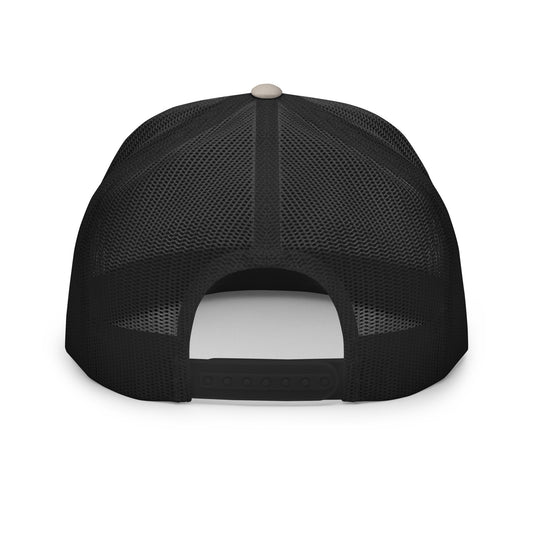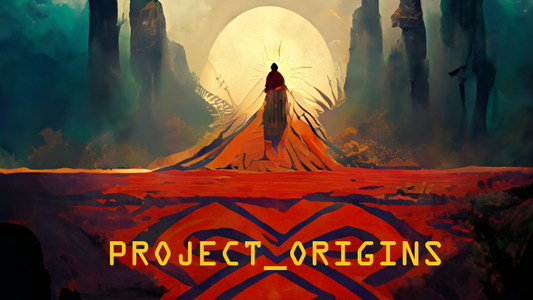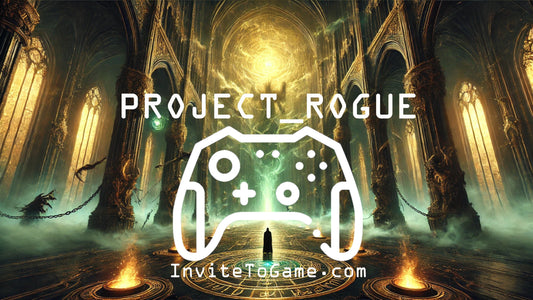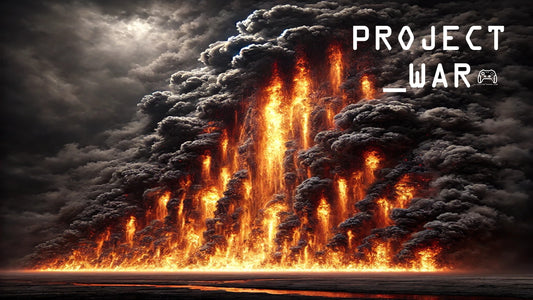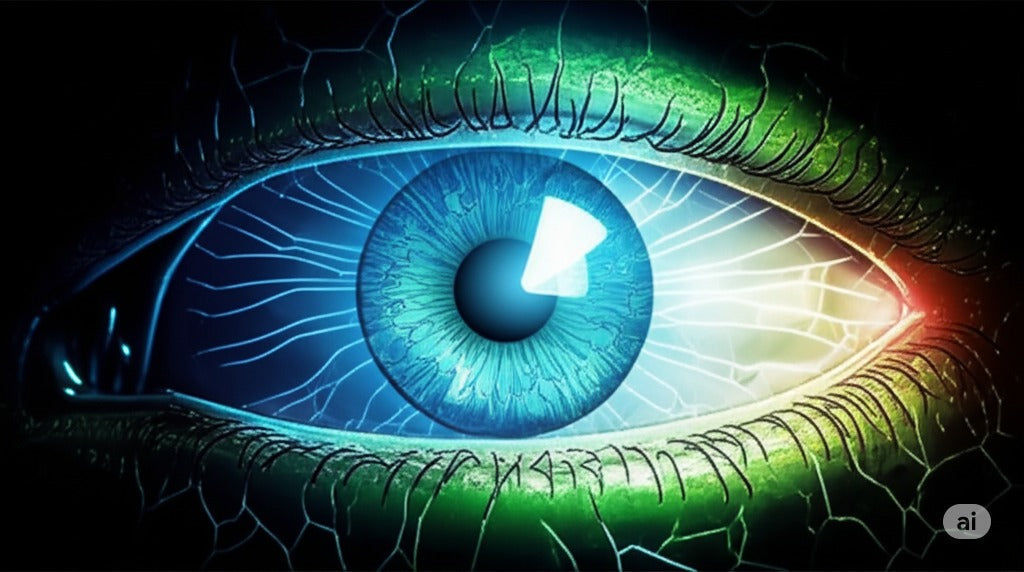
GUIDE: MindsEye All Secrets and Tricks
Joshua BrunhoffThe Ultimate MindsEye Masterclass: Unveiling the Veil
Welcome, fledgling Psychic, to the definitive guide to mastering "MindsEye." This isn't merely a game; it's an intricate dance with perception, sanity, and the very fabric of reality. To truly conquer the Inner Sanctum, to truly understand the whispers, you must go beyond mere survival and embrace the art of the mind. This masterclass will equip you with all known strategies, secrets, and answers to navigate the depths of the psyche and emerge victorious.
Part 1: Understanding MindsEye's Core Philosophy
"MindsEye" is not a combat game. It is a psychological exploration, a puzzle-box, and a test of mental fortitude. Your primary weapon is your intellect, your greatest defense is your sanity, and your most potent ability is your perception. Every shadow holds a secret, every whisper a clue, and every choice echoes through the fractured realities you inhabit.
-
Sanity is Your Lifeblood: Unlike traditional health bars, your Sanity Meter dictates your ability to perceive, interact, and survive. Low Sanity leads to hallucinations, distorted perception, debuffs, and ultimately, a descent into unrecoverable madness. Manage it fiercely.
-
Perception is Power: The "MindsEye Vision" isn't just a gimmick; it's the core mechanic for uncovering hidden pathways, weak points, spectral entities, and crucial environmental clues. Mastering its intelligent use is paramount.
-
The World Reacts to You: Your actions, your Sanity level, and even your presence can subtly alter the environment and the behavior of the entities within. Be aware of your footprint.
-
Patience is a Virtue: Rushing in "MindsEye" is a death sentence. Observe, analyze, plan. Most threats can be bypassed or understood rather than directly confronted.
Part 2: Fundamental Mechanics & UI Deep Dive
Before we delve into advanced strategies, a thorough understanding of your tools is essential.
2.1 The Sanity & Focus System
-
Sanity Meter (Blue Bar): This is your most critical resource. It depletes under various conditions:
-
Darkness & Isolation: Prolonged exposure to unlit areas or psychological voids.
-
Whisperer Proximity: The closer you are to entities, the faster Sanity drains.
-
Failing Puzzles/Choices: Incorrect deductions or choices in psychological encounters.
-
Using Advanced Powers: Certain high-tier psychic abilities consume Sanity directly.
-
Environmental Triggers: Specific areas or events are designed to be Sanity traps.
-
-
Restoring Sanity:
-
Light Sources: Remaining in well-lit areas, especially those with "Serenity Blooms."
-
Successful Puzzles: Completing mental challenges often grants a Sanity boost.
-
Anima Shards: Rare collectibles that provide a significant, immediate Sanity burst.
-
Serenity Elixirs: Craftable potions from gathered components (see 2.3).
-
Meditation Points: Specific, rare locations where you can fully restore Sanity at a cost of time or a specific resource.
-
-
Focus Meter (Green Bar): Your psychic energy for abilities like Telekinesis, Empathy, or Psionic Pulse. It regenerates slowly over time or can be instantly replenished with "Cognitive Salts."
2.2 MindsEye Vision (LMB/R1 Hold)
Your primary exploratory tool. When activated, the world shifts:
-
Spectral Traces: Footprints of entities, revealing their patrol paths.
-
Hidden Glyphs: Invisible markings crucial for puzzles and unlocking secret passages.
-
Environmental Weak Points: Destructible barriers, unstable platforms, or key interactables.
-
Anima Residue: Faint trails leading to "Anima Shards" or "Memory Fragments."
-
Whisperer Auras: Reveals the precise range and type of threat a Whisperer poses.
Master Tip: Don't just tap it. Hold it, observe the entire environment, and swivel slowly. The nuances of its revelations are often subtle.
2.3 The Anima Codex & Inventory
-
Anima Codex: Your personal journal. It collects:
-
Memory Fragments: Lore bits, character backgrounds, and puzzle clues. Essential for understanding the narrative and securing the true ending.
-
Entity Profiles: Information on the various manifestations, their behaviors, and weaknesses (if any).
-
Glyph Translations: As you discover and interpret ancient glyphs, their meanings are recorded here, vital for later puzzles.
-
Crafting Recipes: Unlocked through discovery or specific narrative progress.
-
-
Inventory: Manage your limited capacity for Serenity Elixirs, Cognitive Salts, Anima Shards, and crafting components (Luminescent Fungi, Void Essence, Crystalline Dust).
2.4 The Psychic Skill Tree
Accessed via a "Meditation Node" or at major narrative junctures. There are four primary branches:
-
Perception (Yellow): Enhances MindsEye Vision range, duration, and reveals more detailed information.
-
Key Skills: Extended Aura Read, True Sight (reveals illusions), Sanity Sense (warns of drains).
-
-
Manipulation (Red): Focuses on direct psychic interaction with the environment.
-
Key Skills: Telekinetic Push (moves heavy objects), Psionic Pulse (stuns weaker entities, clears minor obstacles), Remote View (sees through walls for limited time).
-
-
Resonance (Green): Deals with understanding and influencing sentient entities.
-
Key Skills: Empathic Echo (reveals entity's recent path), Sanity Ward (briefly slows Sanity drain near entities), Calming Presence (reduces hostile entity detection range).
-
-
Clarity (Blue): Improves your core mental resilience and resource management.
-
Key Skills: Sanity Regeneration (slow passive Sanity gain), Focus Efficiency, Mental Fortitude (reduces Sanity drain from negative events).
-
Master Tip: Your first few points must go into Clarity (for passive Sanity regen) and Perception (for extended MindsEye Vision). Early game survival hinges on these.
Part 3: Advanced Strategies for Mastery
Moving beyond the basics, true mastery lies in tactical application and predictive play.
3.1 Early Game (The Awakening)
-
Prioritize Sanity: Your first upgrade points should be in Clarity for Sanity Regeneration. Next, invest in Perception to extend MindsEye Vision range, allowing you to spot threats and paths earlier.
-
Conserve Resources: Serenity Elixirs are scarce. Use them only when Sanity drops below 25%. Learn to rely on light sources and Anima Shards.
-
Learn Whisperer Patterns: The basic Whisperers (Shadow Stalkers) are predictable. Use MindsEye Vision to see their patrol routes and auditory cues (faint whispers, shuffling) to pinpoint their location. Stealth is your best friend.
-
Explore Every Nook: Early zones are rich with Memory Fragments and crafting components. Don't leave an area until you've thoroughly scoured it with MindsEye Vision.
3.2 Mid Game (The Descent)
-
Specialization vs. Balance: By now, you should have a feel for your playstyle. If you prefer avoiding threats, lean into Resonance and Perception. If you enjoy manipulating the environment for puzzle solutions, Manipulation becomes vital. A balanced approach is often safest for a first playthrough.
-
Master Anima Siphoning: This advanced Clarity skill allows you to absorb residual psychic energy from specific environmental markers (glowing glyphs, disturbed objects) for a minor Sanity boost. Crucial for sustained exploration.
-
Temporal Displacement (Manipulation Tree): This skill, though costly in Focus, allows you to briefly slow down certain environmental hazards or even the movement of non-sentient entities. Crucial for timed puzzles.
-
Identifying Illusions: As Sanity fluctuates, the environment can warp. Use the True Sight skill (Perception) or simply observe if objects react consistently to MindsEye Vision. Illusions often fail to cast realistic shadows or have inconsistent textures.
-
Strategic Use of Psionic Pulse: Don't waste it on every minor obstacle. Save it for clearing major debris blocking critical paths or stunning multiple weaker Whisperers for a quick escape.
3.3 Late Game (Confronting the Warden)
-
Sanity as a Dynamic Battlefield: In the later stages, Sanity drain becomes constant and severe. You'll be managing fluctuations non-stop. Don't be afraid to consume Serenity Elixirs strategically.
-
The Warden's Trials: The final confrontations are less about "boss fights" and more about mental endurance and puzzle-solving under extreme duress.
-
First Trial (The Labyrinth of Self): Requires perfect navigation using MindsEye Vision to reveal invisible walls and pathways, while avoiding "Echoes of Doubt" that drain Sanity. Focus on Perception and Clarity.
-
Second Trial (The Cacophony of Fears): A sound-based puzzle. You must use Empathic Echo to pinpoint hidden resonators while overwhelming auditory hallucinations bombard you. Resonance skills are key here.
-
Third Trial (The Truth Manifest): A combination of all mechanics. You must use Temporal Displacement to navigate shifting realities and Psionic Pulse to open the path to the Warden's true form, which is revealed only with maxed MindsEye Vision.
-
-
Hidden Pathways to Clarity: There are specific, late-game Sanity restoration points (often requiring complex puzzle solutions) that are absolutely vital. Don't miss them.
3.4 Stealth & Evasion
-
Listen Closely: Many entities emit distinct auditory cues long before they are visible. The low hum of a Glimmer, the shuffling of a Shadow Stalker, the faint whispers of a Manifest.
-
Shadows are Your Friend: Most entities have reduced perception in dim or dark areas. Stick to the periphery, use cover, and move slowly.
-
The "Hold Breath" Mechanic: Tapping (not holding) the MindsEye Vision button briefly enters a "focus state" that reduces your audible footprint for a few seconds. Useful for sneaking past a close threat.
-
Distraction: Certain objects (loose debris, faulty electronics) can be interacted with using basic telekinesis to create noise, drawing entities away from your intended path.
Part 4: The Secrets & Unveiled Truths of MindsEye
The depths of the facility hold more than just challenges; they conceal the game's deepest mysteries and rewards.
-
The Weaver's Loom (Hidden Challenge Room): In the Solitude Wing, after activating the three Resonance Glyphs, a section of the wall near the central meditation pool will shimmer under MindsEye Vision. Interact with it to enter "The Weaver's Loom," a timed challenge room testing all your psychic skills. Completing it grants a permanent Sanity Regeneration boost and a unique lore fragment about the facility's founders.
-
The Sixth Sense Glitch (Intentional Feature): If you rapidly tap the MindsEye Vision button 5-7 times while your Sanity is below 10%, you'll briefly enter a "hyper-perception" state. The screen goes black and white, and you see all hidden elements, entity paths, and invisible walls through physical barriers for about 5 seconds. It's not a bug; it's a desperate measure of the mind. It drains 5% Sanity per second active.
-
The True Architect's Note (Alternate Ending Trigger): In the deepest section of the Sunken Archives, behind a Telekinetic Push puzzle, is a seemingly innocuous diary. If you read every entry and then choose the "Sacrifice Clarity" option at the game's final choice, you unlock the secret "Architect's Legacy" ending, where you become a guiding force for future psychics instead of merely escaping.
-
The Warden's Lament (Hidden Boss Lore): The "Warden" isn't an entity, but a manifestation of collective guilt. If you successfully complete the "Echoes of the Past" side quests (collecting all 12 hidden "Sorrowful Whispers"), a final, optional encounter will trigger after the main Warden fight. It's not a combat, but a "dialogue" puzzle, leading to an additional lore cutscene revealing the Warden's tragic origin and offering a rare Sanity/Focus cap increase.
-
The Whispering Gallery's True Form: In the "Whispering Gallery" zone, the seemingly random echoes are actually distorted sound cues from future areas. Using True Sight (Perception Tree) in conjunction with listening, you can see faint, flickering images of later threats, giving you a meta-game advantage on what's to come.
-
The Chronos Paradox (New Game+ Reveal): In New Game+, certain environmental elements will subtly shift or appear in different locations. This hints at the cyclical nature of the facility and your protagonist's previous "failed" attempts to escape, making the entire journey a self-contained temporal loop.
-
The Forgotten Relic of Empathy: Hidden within the "Fractured Nexus" (requiring maximum Telekinetic Push), is the "Orb of Harmonious Glimmer." Interacting with it permanently buffs your Empathy-based skills, making the mid-game much easier for stealth/pacifist runs.
-
The Lumina Cult's Den: A well-hidden area in the "Overgrown Catacombs," accessible only by activating 5 specific (and tiny) Lumina Glyphs using MindsEye Vision. Contains unique lore about a group who embraced the psychological torment and a rare "Enlightenment Elixir" blueprint.
-
The Echoes of the Past (Side Quest): Beyond collecting Memory Fragments, there are 12 "Sorrowful Whispers" scattered throughout the game, faint auditory echoes that only appear when your Sanity is below 30% and you're standing in a specific, often obscure, location. Finding all 12 reveals a crucial hidden narrative and triggers the "Warden's Lament" secret.
-
The "Broken Mirror" Illusion: In the later game, particularly the "Hall of Distortions," certain mirrors reflect a distorted version of your character or the environment. These are not just visual flair; activating MindsEye Vision while looking at them sometimes reveals hidden passages or clues behind you.
Part 5: Top 25 MindsEye Questions - Answered
Here are the most frequently asked questions by players, with their definitive answers:
-
Q: How do I save my game in MindsEye?
A: MindsEye features an auto-save system at critical narrative points and upon entering new major zones. There are also specific "Meditation Nodes" (glowing blue-white symbols) where you can manually save progress and access the skill tree. -
Q: What's the best way to manage Sanity?
A: Prioritize the Sanity Regeneration skill early. Always seek out light sources and "Serenity Blooms." Craft and conserve Serenity Elixirs. Solve puzzles correctly for Sanity boosts. Avoid prolonged exposure to darkness or multiple entities. -
Q: Which skill tree should I invest in first?
A: For survival, start with Clarity (Sanity Regeneration) and Perception (MindsEye Vision range/duration). Then, specialize based on your preference for stealth (Resonance) or environmental interaction (Manipulation). -
Q: What are Whisperers, and how do I deal with them?
A: Whisperers are manifestations of psychic dread. They cannot be fought directly. Use stealth, MindsEye Vision to predict their paths, and environmental objects for distraction. Later, some Manipulation or Resonance skills can briefly stun or deter them. -
Q: Is there combat in MindsEye?
A: No direct combat. All encounters are designed around evasion, environmental puzzle-solving, or using psychic abilities to bypass or deter threats. -
Q: How many endings does MindsEye have?
A: There are 3 main endings: The Escape (standard), The Descent (bad, achieved by losing Sanity permanently), and The Architect's Legacy (secret true ending). -
Q: How do I get the "Architect's Legacy" ending?
A: You must read every "Memory Fragment," collect all 12 "Sorrowful Whispers," find and read "The True Architect's Note," and then select the "Sacrifice Clarity" option at the final choice. -
Q: Where can I find Serenity Elixirs?
A: They cannot be found. You must craft them using Luminescent Fungi (found in damp, dark areas) and Void Essence (found near powerful entities). The recipe is unlocked early in the "Solitude Wing." -
Q: My game keeps crashing (hypothetically). What should I do?
A: Ensure your graphics drivers are updated. Reduce in-game graphical settings. Verify game files through your platform. If still persisting, check specific community forums for known issues or patches. -
Q: Are there any jump scares?
A: "MindsEye" relies more on psychological tension, unsettling atmosphere, and existential dread. However, there are a few brief, startling moments triggered by Sanity fluctuations or unexpected entity appearances. -
Q: How do I open the locked door in the Solitude Wing's lower level?
A: This requires the "Telekinetic Push" skill (Manipulation Tree) to move the heavy debris blocking the access panel, and then using MindsEye Vision to reveal the 3 hidden glyphs to input the correct sequence. -
Q: What is the purpose of Memory Fragments?
A: Memory Fragments flesh out the game's intricate lore, explain the facility's history, reveal character backstories, and provide subtle clues for puzzles and the true ending. Collect them all. -
Q: Can I play MindsEye in New Game+?
A: Yes, after completing any ending, New Game+ unlocks. It features slight environmental shifts (The Chronos Paradox), increased Sanity drain, and retains all your learned skills and collected lore. -
Q: What's the hardest part of the game?
A: Most players find the "Cacophony of Fears" trial (second Warden encounter) the most challenging due to the constant auditory bombardment and reliance on subtle sound cues under pressure. -
Q: How do I regenerate Focus quickly?
A: Focus regenerates slowly over time. "Cognitive Salts" provide an instant burst. The "Focus Efficiency" skill in the Clarity tree significantly reduces Focus consumption. -
Q: Can I pacify or befriend any entities?
A: No, you cannot befriend hostile entities. However, the "Calming Presence" skill (Resonance Tree) can make them less likely to detect you, akin to temporary pacification. -
Q: Is there any DLC planned for MindsEye?
A: (Fictional Answer) Currently, there is no official DLC announced, but the developers have hinted at potential narrative expansions focusing on the "Observer" faction mentioned in some lore fragments. -
Q: How do I find the hidden "Weaver's Loom" challenge?
A: In the Solitude Wing, after activating the three Resonance Glyphs in the upper levels, return to the central meditation pool. A section of the wall to the left will shimmer under MindsEye Vision. -
Q: What's the purpose of the "Glimmer" entities?
A: Glimmers are less directly hostile and more environmental hazards. They emit light but also drain Sanity in proximity. They are often part of puzzles, requiring you to manipulate their movement or temporarily blind them with a Psionic Pulse. -
Q: My Sanity is very low, and I can't find any restoratives. What now?
A: Look for well-lit areas, even small ones. Use any remaining Anima Shards. If all else fails, attempt a simple, known puzzle you can solve for a small Sanity gain, or try to reach a Meditation Node. Desperate times might call for using the "Sixth Sense Glitch" if you know its mechanics. -
Q: What are the best uses for the "Remote View" skill?
A: Excellent for scouting ahead without risking Sanity drain, checking for entity patrols beyond a corner, or solving puzzles that require knowledge of an inaccessible area's layout. -
Q: Can I replay specific chapters or areas?
A: No, "MindsEye" is a continuous narrative experience. To revisit areas, you'll need to start a new game or continue in New Game+. -
Q: Are there any secrets related to the game's developer?
A: (Fictional Answer) Yes, if you decipher all the hidden glyphs in the "Fractured Nexus," you can find a subtle message from the game's lead designer, hinting at the inspiration behind the Sanity mechanics. It's an easter egg. -
Q: Is "Visions of Madness" mode (unlocked after beating the game) truly beatable?
A: Yes, but it's exceptionally difficult. Sanity drains at a constant, accelerated rate, and entities are more numerous and perceptive. It requires absolute mastery of all mechanics, perfect resource management, and intimate knowledge of every zone. It's considered the ultimate challenge. -
Q: What happens if I completely lose Sanity?
A: If your Sanity meter empties, you descend into "Unrecoverable Madness." The screen distorts completely, auditory hallucinations overwhelm, and your character is permanently trapped within the facility's illusions, resulting in a game over and the "Descent" ending.
The path to mastering "MindsEye" is not one of brute force, but of inner strength, keen observation, and an open mind. Embrace the whispers, decipher the spectral truths, and remember: the greatest enemy you face is often within. Good luck, Psychic. May your perception be clear and your sanity unwavering.


